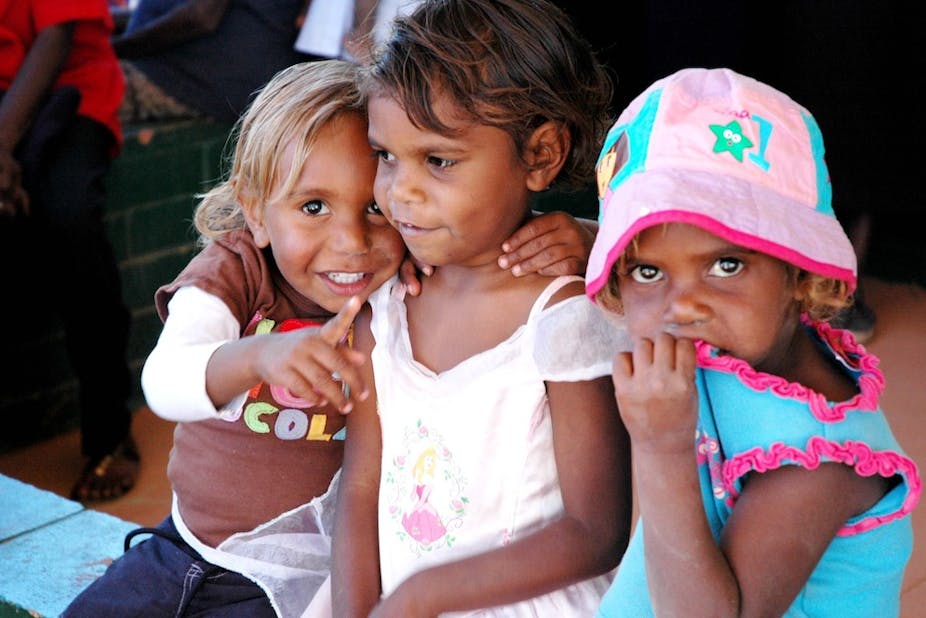Five years ago, prime minister Kevin Rudd took to the nation’s driving seat with the historic Stolen Generation apology.
With the theme of this year’s NAIDOC (National Aboriginal and Islander Day Observance Committee) Week the 50th anniversary of the presentation of the Yirrkala Bark Petitions to federal parliament, there is renewed focus on relationships with indigenous Australia. But how far have we really come in this difficult policy area?
And as Rudd takes the wheel once more, what moves will he and the government make in a policy area that has been strangely quiet?
Other than the past week, the lead-up to the federal election has seen a dearth of Indigenous policy proclamations, and in May the budget made no significant changes to Indigenous policy funding. This is all in marked contrast to previous years’ rhetoric over the Northern Territory intervention, apology and Closing the Gap.
Is the current silence due to bipartisanship on basic issues of social policy and political recognition? Perhaps it is, but there has been substantive bipartisanship for many years on Indigenous policies like the intervention. Today’s silence reflects a deeper exhaustion after too many cycles of crisis and reform.
The long decade of Indigenous policy
The first of many changes to recent Aboriginal policy began when John Howard abolished the Aboriginal and Torres Strait Islander Commission in April 2004. At the time, he declared:
I’m not going to talk about new dawns in reconciliation. We’ve had too many false dawns in the past and these approaches are always doomed to produce disappointment.
But within a year, the Coalition government had initiated a “quiet revolution”, telling us that Aboriginal people were enjoying their first taste of governments listening to them. The policy was Shared Responsibility Agreements (SRAs), where Indigenous communities would volunteer to participate in governance and health initiatives in return for one-off funding for minor community projects.
As dismal reviews started to pile up in 2006, the government quietly ditched SRAs. But there was no new model waiting to go – the vision of self-determination was discredited and the representative infrastructure of the Aboriginal and Torres Strait Islander Commission (ATSIC) was long gone. In the vacuum, the Howard government declared the most radical new dawn of all – the Northern Territory Emergency Response (NTER).
Whether in an effort to avoid being wedged, or in genuine agreement, the Labor opposition supported the NTER. When it arrived in power originally, the Rudd government continued the intervention, but sought to water down its divisive political rhetoric. It further offset this exclusionary policy by offering the long-awaited government apology to the Stolen Generations.
Where are we now?
Under the label of “Stronger Futures”, the former Gillard government extended the basic elements of the NT intervention but left behind the political rhetoric. But without this political drive to “fix” remote Aboriginal communities - however objectionable many found it - the intervention doesn’t really make sense. It is a piecemeal set of paternalistic restrictions and administrative reforms that is only held together by the political vision of turning Indigenous communities into “normal suburbs”.
Indigenous policy under Labor has revolved more and more around the catchphrase of “Closing the Gap” in Indigenous disadvantage. But this is a performance measurement rather a policy vision. Closing the Gap tells us that inequality is bad – an uncontroversial proposition – but not where this inequality came from or how we might change it.
To answer these questions, the government has relied on well-worn ideas of Aboriginal dysfunction. Julia Gillard told us that she saw Closing the Gap as:
…a call for changes in behaviour…to take care of your children. To take a job when you find one…To send your kids to school, pay your rent, save up for a home. To respect good social norms and to respect the law.
This can no longer be framed as fresh thinking or the shattering of a politically correct silence. It has simply become the new standard line - and there are no indications that Rudd has a fresh take.
In a recent edition of The Monthly, Judith Brett suggests that the broader poverty of current Australian political debate is due to the absence of a new vision:
Today’s politicians, like generals fighting the last war, are still clinging to the neoliberal verities that served them so well in the past decades; they are applying yesterday’s solutions to today’s problems.
The same might be said of Indigenous policy.
Policy is politics
An example of the government’s fragmented policy narrative is the way it’s pursuing constitutional recognition of Indigenous culture and history, while its social policy is telling Aboriginal people how to behave. But even if Indigenous cultures are recognised, will this change the way the government works with communities, or how it makes policy that affects those cultures? There is a disconnect between policy and politics, but in this area the two cannot be productively separated.
Federal Indigenous policymakers carry a double burden. They grapple with levels of disadvantage beyond those in any other area of policy. And the way they deal with Indigenous issues reflects on who we are as a nation.
Maybe too much vision can be a problem – often Indigenous issues have become a political football used to score party political points. But we cannot escape the fact that Indigenous policy narratives tell a deeper story about the Australian political community. And if you don’t have a story to tell, then this confusion becomes the story itself. At the moment both our political parties are only tinkering at the edges of an unsatisfactory status quo.

